Idaho may be famous for its potatoes, but there are many other great plants from this state for your lawn and garden. When you’re choosing to build a new garden or landscape, it pays to choose native plants whenever possible. They contribute so much back to the environment, and it will also be easier for you to grow and keep happy.
Our Idaho native plants list will help you choose the best plants for your garden and landscaping needs. Native plants in this state, as with many other states, do tend to be very regional. This means you may have different native plants in Boise, for example, than in other parts of the state. When in doubt, always check with local nurseries or plant experts in your zone to help you know which plants are best.
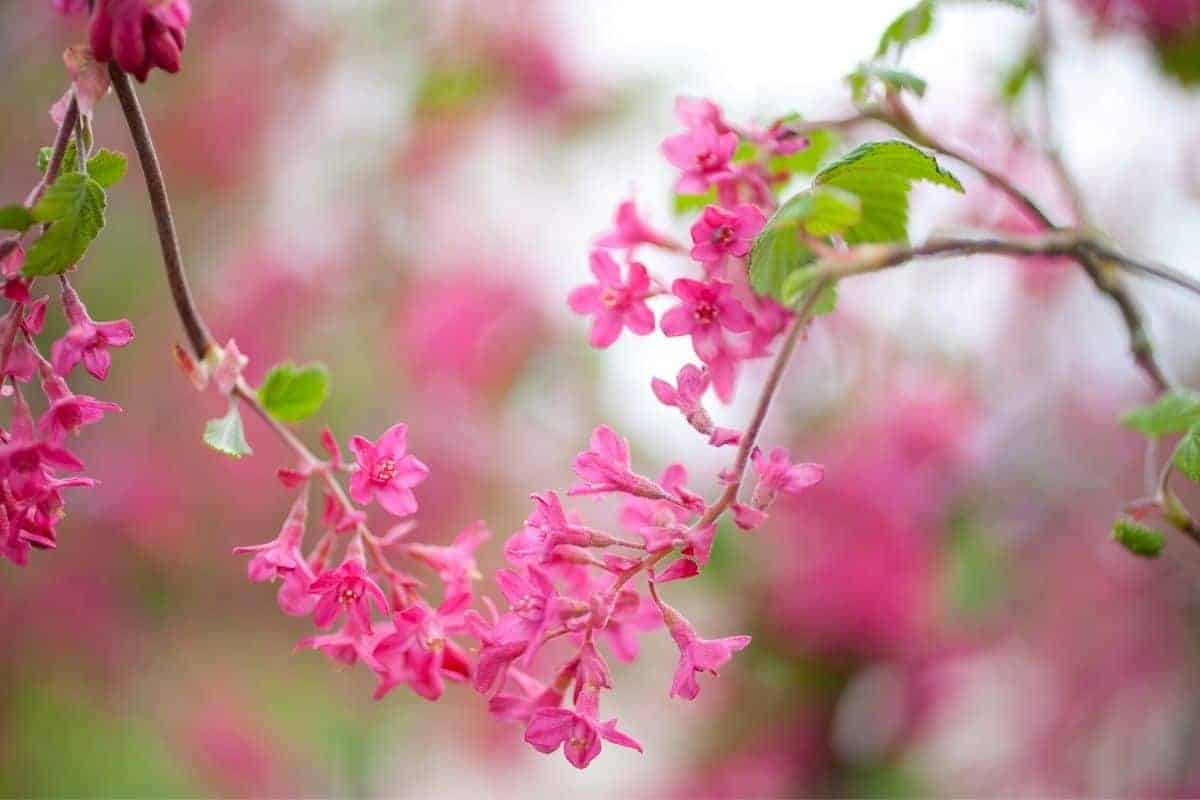
With that in mind, let’s take a look at some native plants to the Gem State.
Explore Our Idaho Native Plants List
The northwestern state of Idaho is known for its mountain landscapes and the large amounts of protected wilderness and recreational areas, meaning it’s a fantastic state for nature lovers. The capital, Boise, is in the foothills of the famous Rocky Mountains. The state tree is the tall and strong Western white pine.
Here are some plants you can find native to the state of Idaho:
1. Blue flax (Linum lewisii)
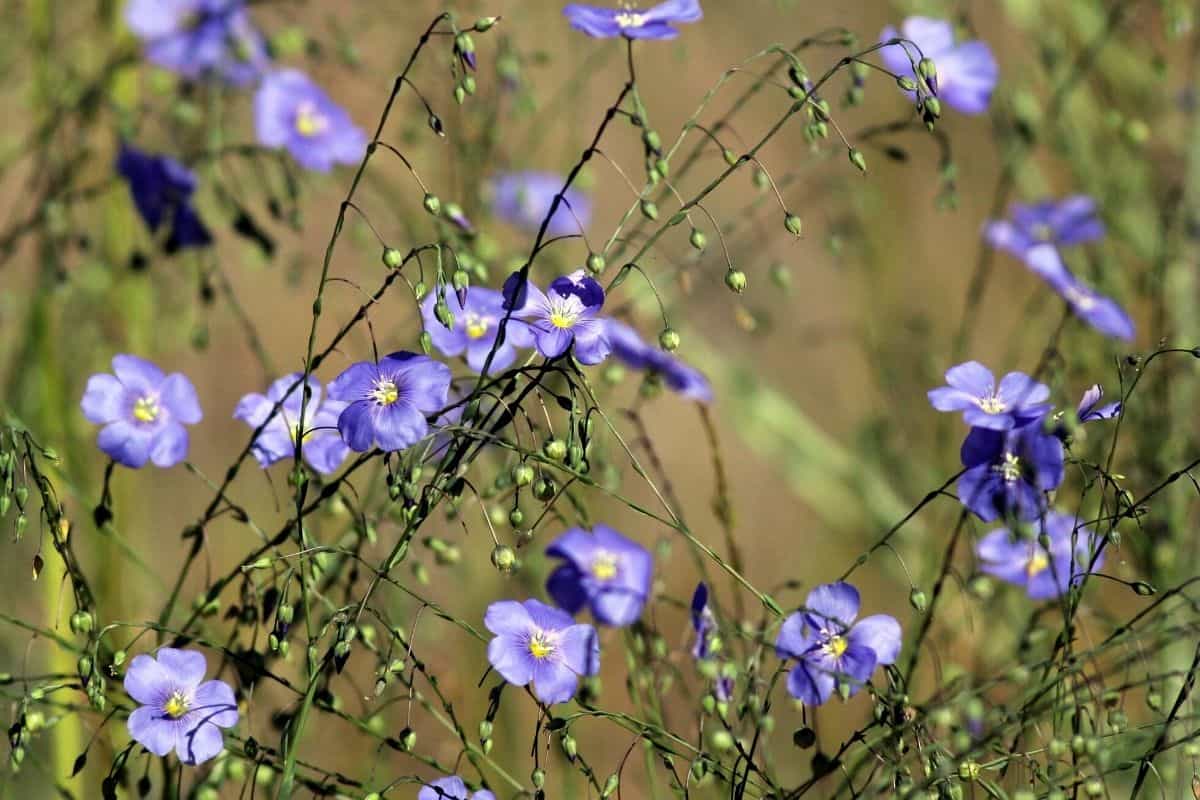
Blue flax is a perennial plant that grows about 18-20 inches tall, and typically leans slighting to one side, rather than growing straight up.
It is sometimes also called prairie flax or wild blue flax and it has pale blue flowers with five petals each, measuring about 1 to 1 ½ inches across. It has a leafy stem when young but loses some leaves as it matures. It likes full sun, medium water, and blooms from March to September.
2. Rocky Mountain maple (Acer glabrum)
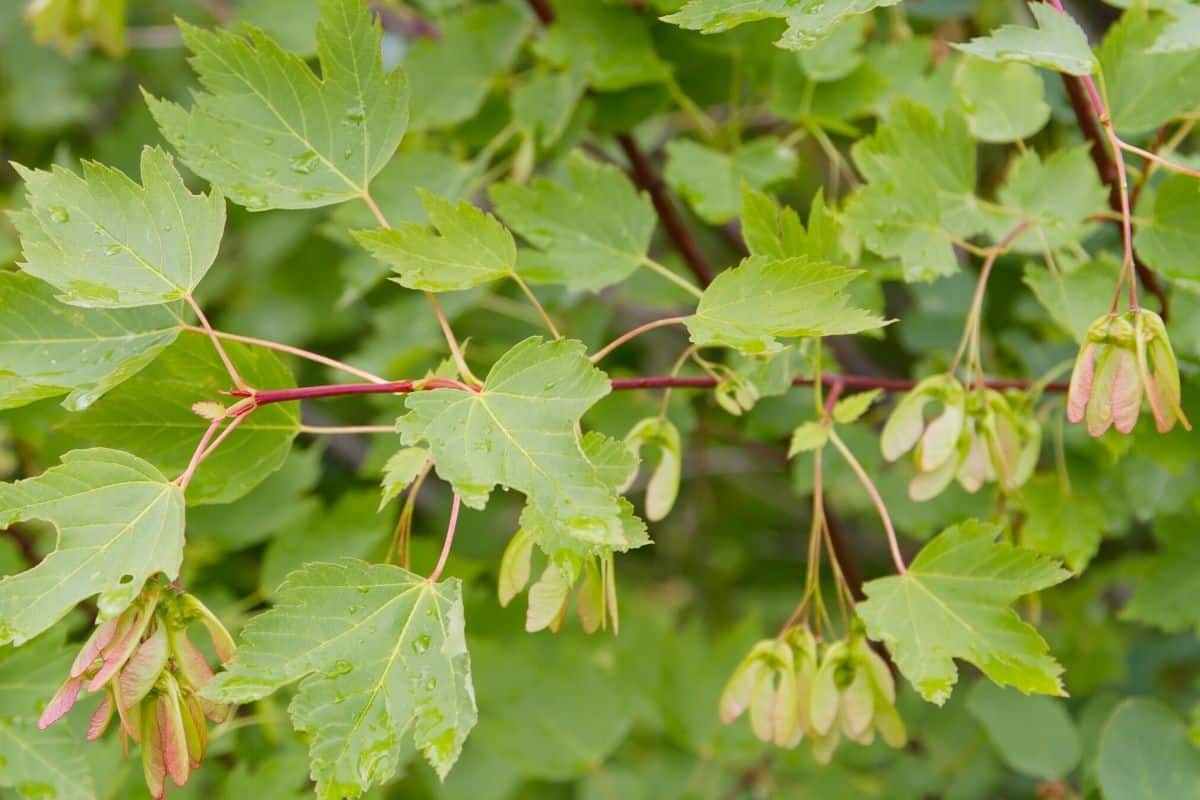
Rocky Mountain maple is also known by the common names of dwarf maple, Douglas maple, and rock maple. This small deciduous tree can grow to about 30 feet in height and has broad leaves. It likes sun to partly shady and is hardy to USDA zone 4.
3. Green-headed coneflower (Rudbeckia laciniata)
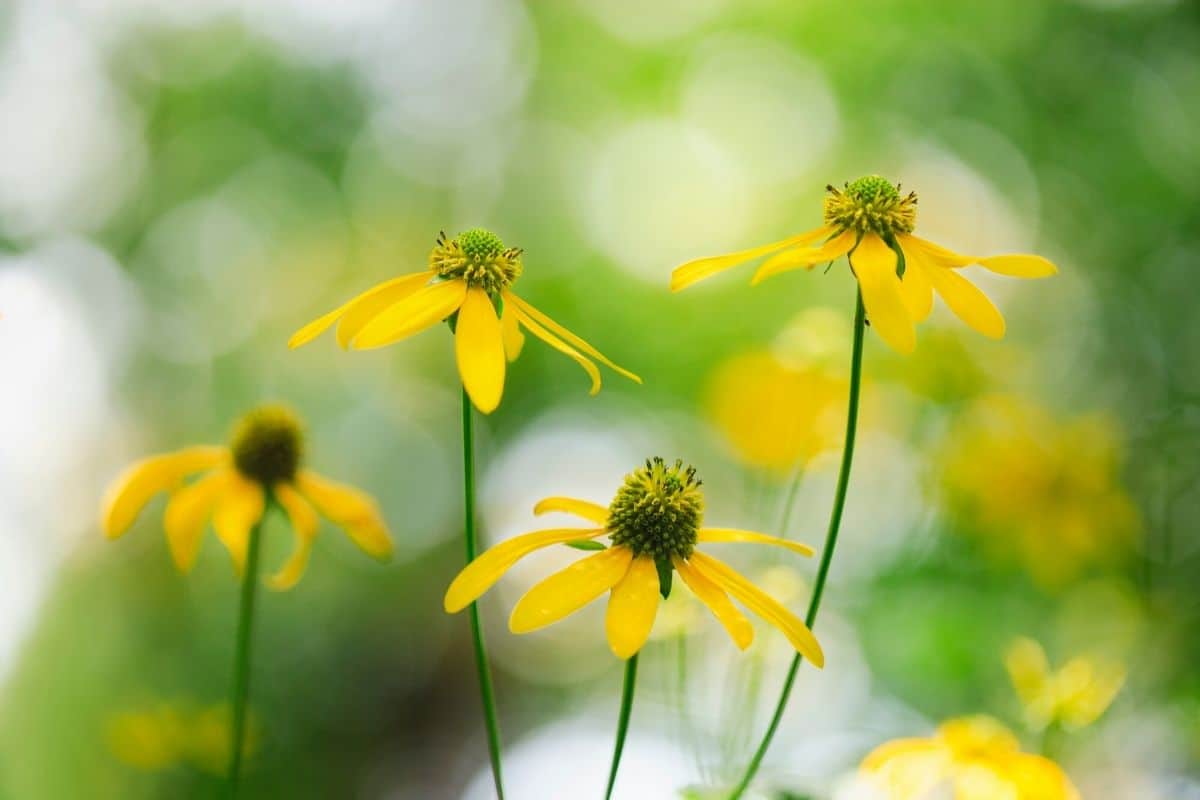
This type of coneflower is also known by the names cutleaf coneflower, golden glow, or just plain coneflower.
It will typically have 6-17 yellow ray flowers surrounding the yellowish-green cone in the center. The rays will droop a little and become more pronounced as it matures.
The plant itself can grow from 3 to 6 feet tall and the yellow blooms come in July – October. It prefers acidic soil, low water, and can thrive in all types of sun. It brings great value to honeybees.
4. Common yarrow (Achillea millefolium)
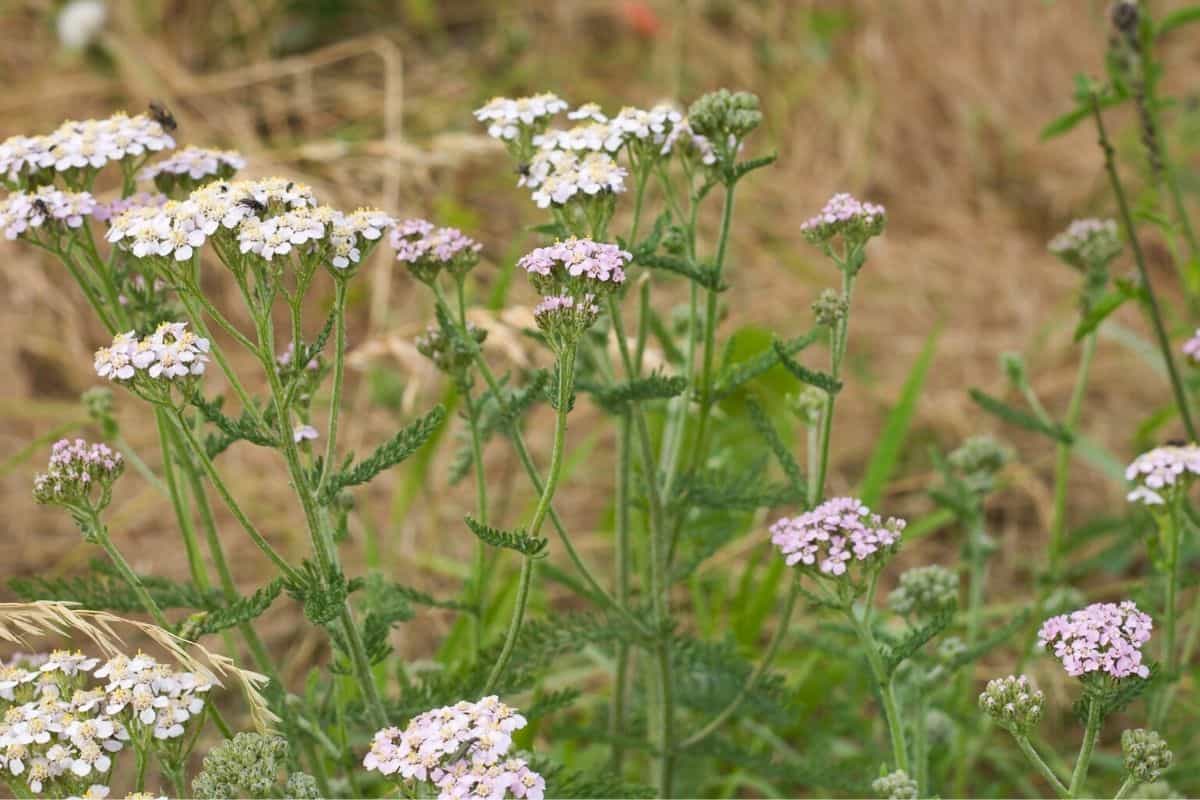
Common yarrow is also called simply yarrow or sometimes called milfoil.
It is a native wildflower that grows up to three feet tall and has no branches, except near the top. The leaves are about 3-5 inches long, and the flowers can bloom white or light pink.
It blooms from late April to early July in the south and blooms from mid-July to mid-September in the north.
It likes medium water, full sun, or part shade, and is very drought tolerant. It makes a great ornamental garden plant and it’s also beneficial to insects.
5. Queen’s cup lily (Clintonia uniflora)
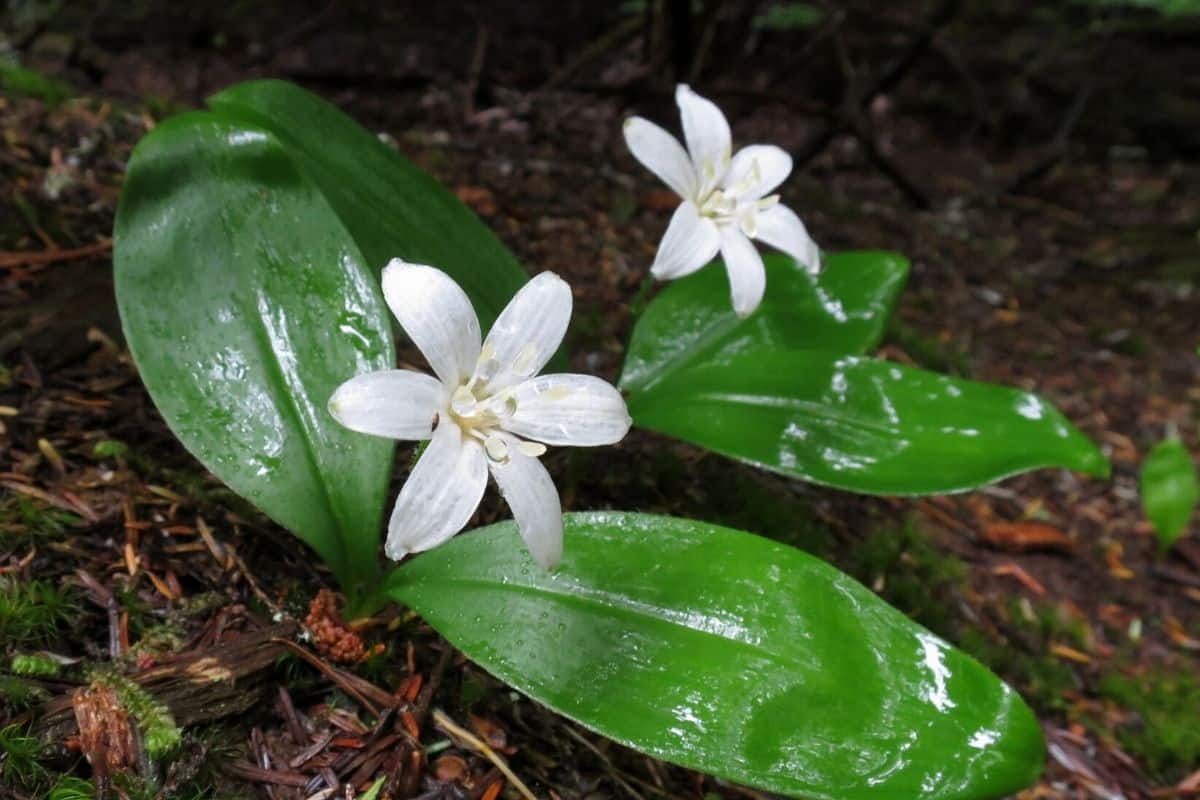
Queen’s cup lily is also known as bead lily or bride’s bonnet. It’s a flowering plant that is “one flowered”, which is one characteristic that makes it stand out from other species in the same genus.
This perennial flowering plant is in the lily family, and it’s native to mountainous areas and it grows in partial to full shade with rich, moist soil.
The showy flower has six white petals and large green leaves in a blade shape. The flowers bloom in spring and summer and they attract songbirds and also pollinating insects. They would make an absolutely beautiful addition to your garden.
6. Blazing star (Liatris spicata)
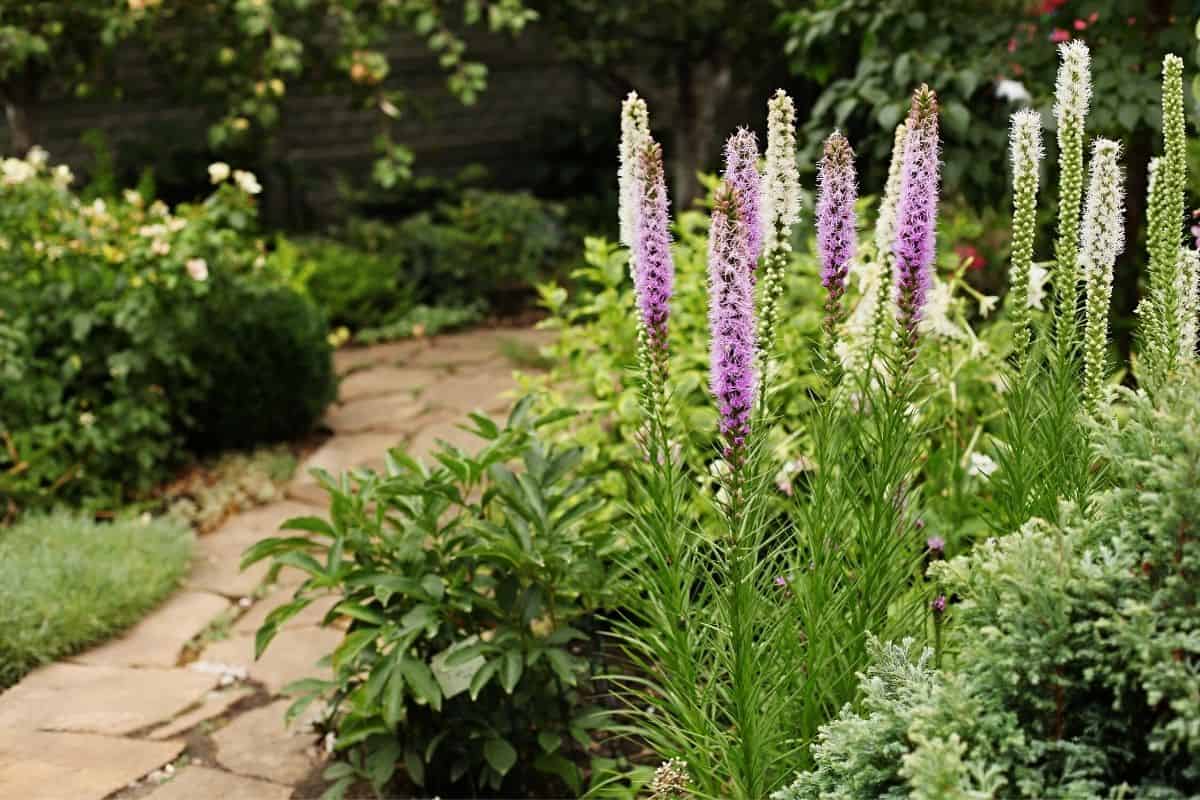
Blazing star is a native perennial that will certainly catch your eye and leave an impression.
When mature, it can grow from 2-6 feet high and has a spread of 1-3 feet. It will form clumps as it grows and is mostly native to low grounds, marshlands, meadows, or Midwestern ditches. It is sometimes also called gayfeather.
It blooms purple, lilac, or white flowers in the summer. The spiky blooms from this plant attract birds, bees, and butterflies to your garden.
7. Milkweed (Asclepias syriaca)

Common milkweed is the species most commonly associated with the word “milkweed”, although there are different varieties.
This is a tall species, easily recognizable, often forming large clones. This perennial herb blooms white or purple flowers in the summer from June to August. It usually grows from 3-5 feet, although it can grow as high as 8 feet in gardens or native in ditches.
It likes full sun and moist soil and it’s not shade-tolerant at all. You want to plant this in a place where it gets sun all day.
8. Chokecherry (Prunus virginiana)
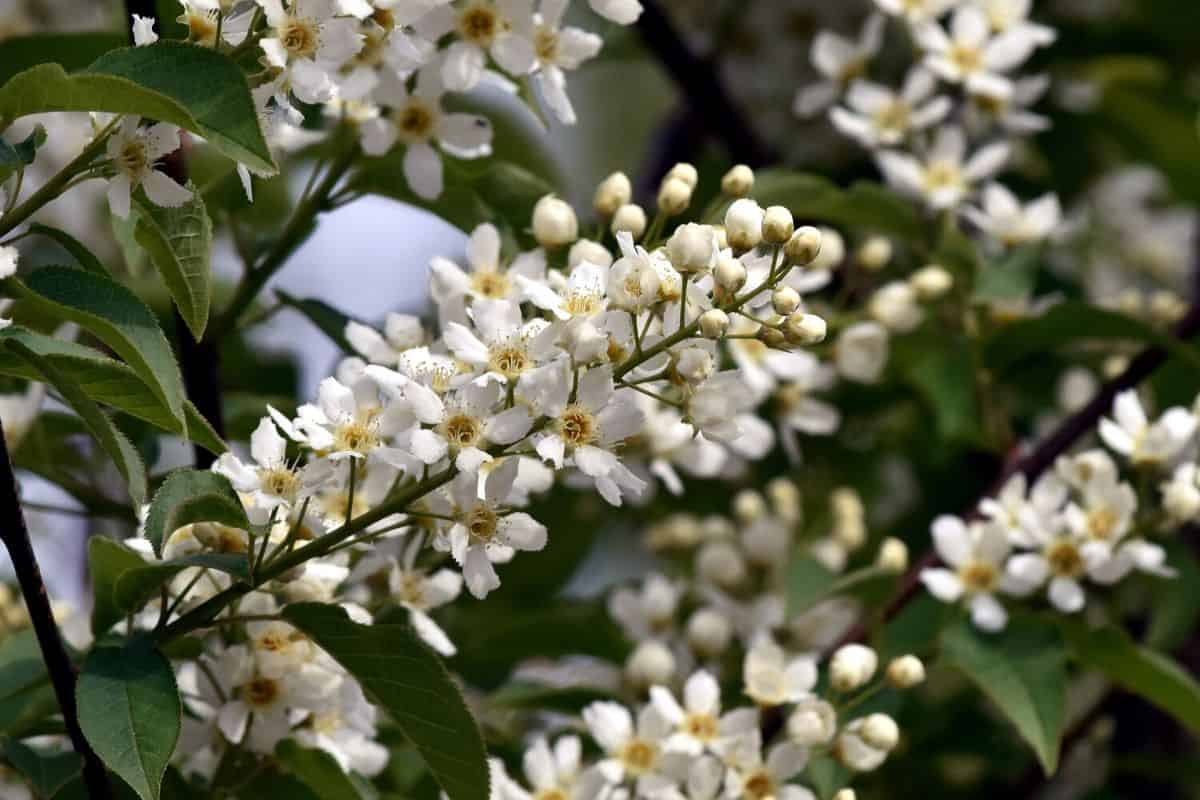
This tall tree grows to 40 feet tall, with long, clusters of fragrant white flowers. It also has familiar, tart cherries that grow from it, which are often used for jams and jellies or syrup.
Chokecherry is actually considered a large shrub and it tolerates a wide range of lighting and soil conditions, meaning there is a lot of flexibility in how you use it in your landscaping or garden.
9. Red-flowering currant (Ribes sanguineum)
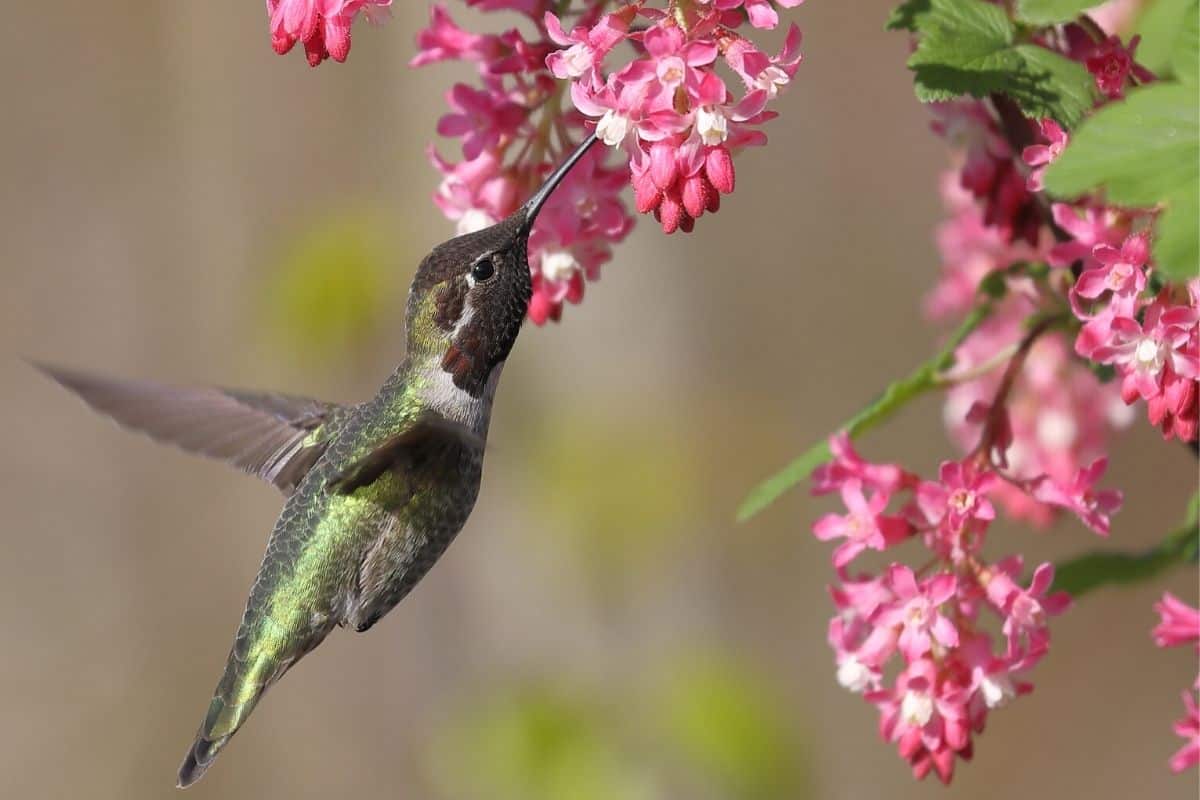
Red-flowering currant is also sometimes called blood currant or pink winter currant.
This species can grow from 3-9 feet tall, and it’s mostly found in dry, open woods in the wild. The leaves look a bit like a maple leaf, with five lobes, and they are hairy on the undersides.
It has blue-black fruits, and the stems are reddish-brown. They are drought-tolerant, making them great for dry summers. They bloom in the spring and are relatively low maintenance when used in landscaping.
10. Fairybells (Disporum trachycarpum)
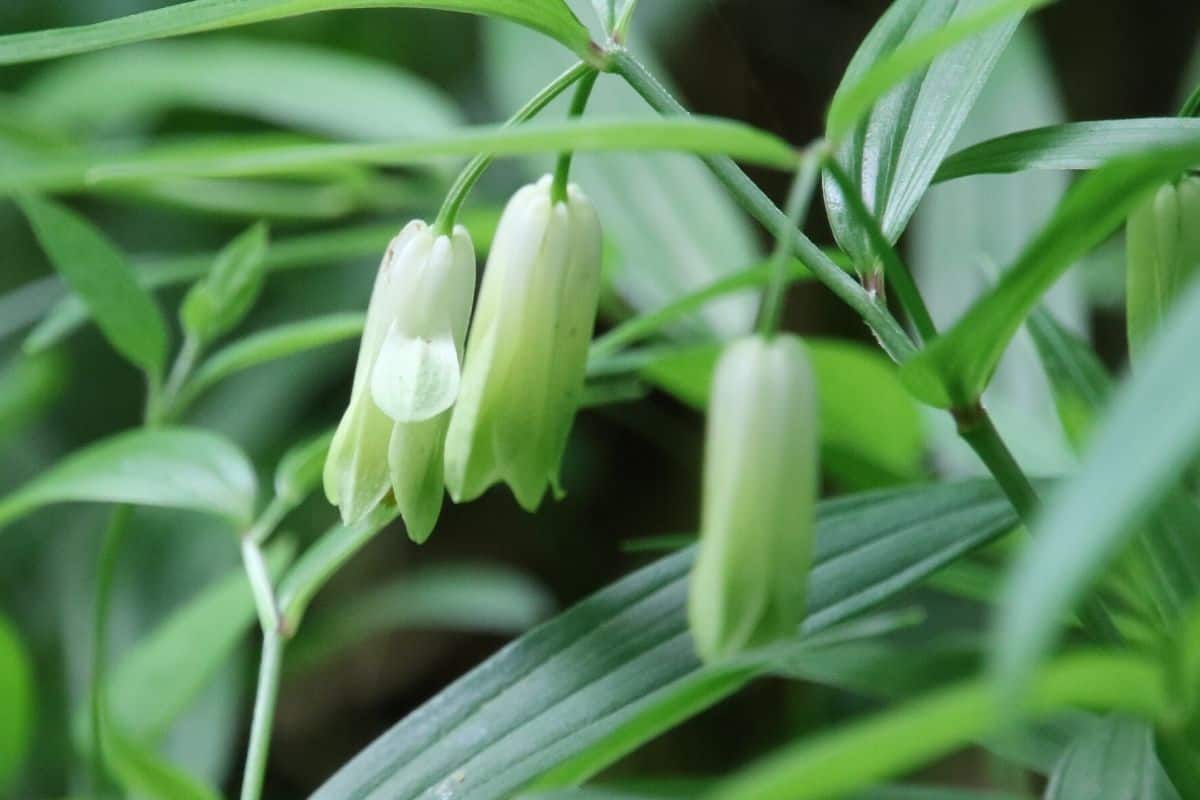
Fairybells are a small perennial that grows in wooded slopes, often by streams, around the Rockies.
It grows to about 1 foot and 8 inches tall, and the bell-shaped flowers fall down in pendant-like shapes. It is one of few flowers of this type that does best in shade. This can be a great addition to the shaded parts of your garden. They also work well for non-invasive ground cover.
11. Indigo bush (Amorpha fruiticosa)
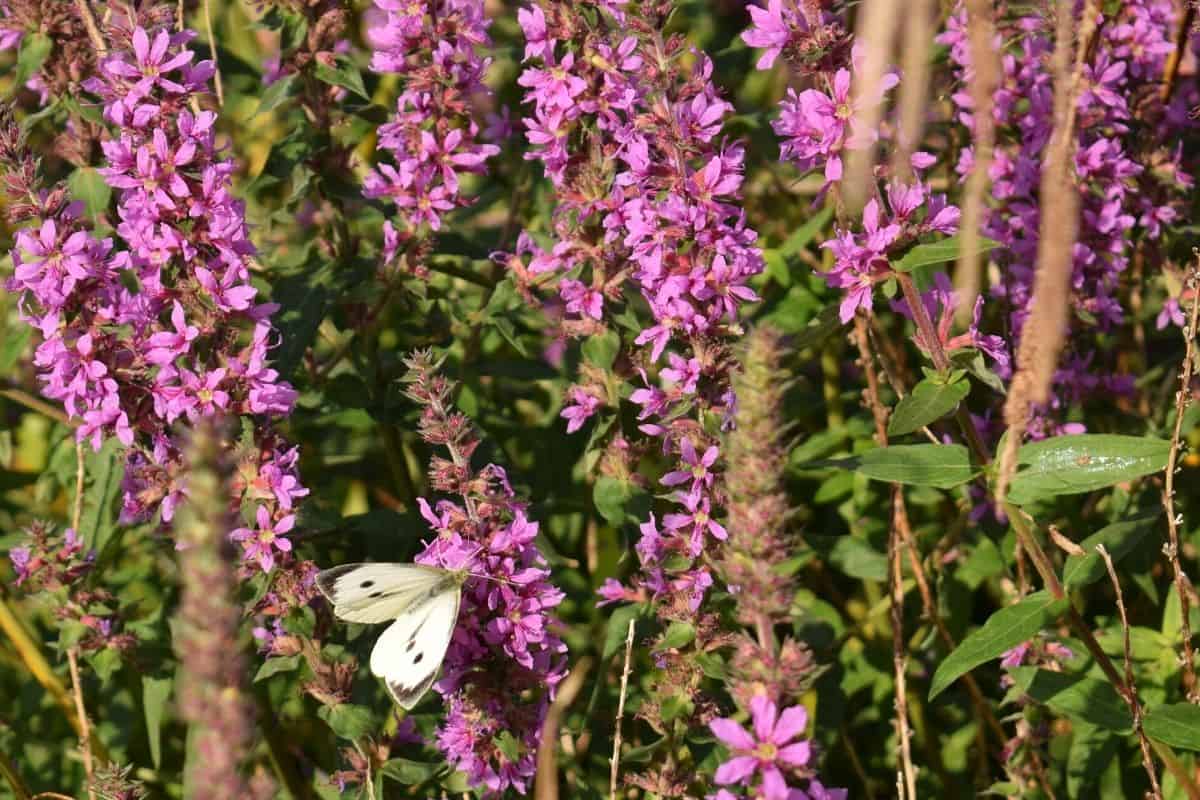
Indigo bush is another great native choice. It’s also called false indigo bush or desert false indigo, as well as other names.
This shrub likes full sun and grows from 4-12 feet and has a spread of 6-15 feet. It requires little water and is very low maintenance. Once you plant it, you can pretty much leave it be to just do its thing.
It likes moist, but well-drained soil. It can be used as a windbreak or also to help prevent soil erosion. It does well in flower beds, borders, and on banks and slopes.
Idaho native plants list FAQ
We hope this list helps you get started on the right track when it comes to choosing native Idaho plants for your garden or landscape. Now let’s look at some commonly asked questions about native plants in this state.
What plants grow well in Idaho?
If you’re looking for plants that grow well in Idaho, you can start with our list above. Beyond that, go regionally specific and talk to a local nursery about the best choices for your specific location.
If you are planning a big landscaping project, you might have an expert out to do soil samples and test other conditions of your property to help you choose the best plants that grow well for your particular area. Otherwise, any native plant will do well in Idaho, as long as it is planted properly in the right conditions.
What flowers are native to Idaho?
You will see some flowers or flowering shrubs on our native list above, but if you’d like to dive deeper, we recommend you check out the full list on the Idaho state page of the Wildflowers of the United States database. Here you can learn more about flowers such as Bluebell Bellflower, Creeping Oregon Crepe, Thimbleberry, White Clover, Black-eyed Susan, and so many more.
Is sage native to Idaho?
Sage has grown increasingly popular in recent years due to the popularity of certain new age practices like smoke cleansing. Smoke cleansing with sage originated as “smudging” in certain Native American tribes but is a closed practice. Smoke cleansing can be done by anyone, so long as the sage is ethically sourced.
Greater sage-grouse (Centrocercus urophasianus) is native to Idaho and some other types of sage are also found in the state. Sage and sagebrush are not actually the same plant, so please take note of this. Sage is a spice, whereas sagebrush is a high desert shrub. However, white sage is suitable for parts of Idaho Highway Districts 1, 2, 3, 4, 5, and 6. It is used in part of the Idaho roadside restoration and prevention programs.
What vegetables do well in a garden in Idaho?
If you’re wanting to plant a vegetable garden in Idaho, you can do well with crops like beets, carrots, lettuce, onions, chard, spinach, all of the cabbage family, peas, turnips, and radishes. There are other crops that can do well in warmer weather months, but you must ensure all signs of frost are completely gone before seeding or transplanting. For warm-weather crops, consider corn, peppers, eggplant, tomatoes, beans, melons, and squash.
Now that you have more information about plants in Idaho, you are better prepared for planting your garden, designing your landscaping, or just learning more about the natural environment around you.
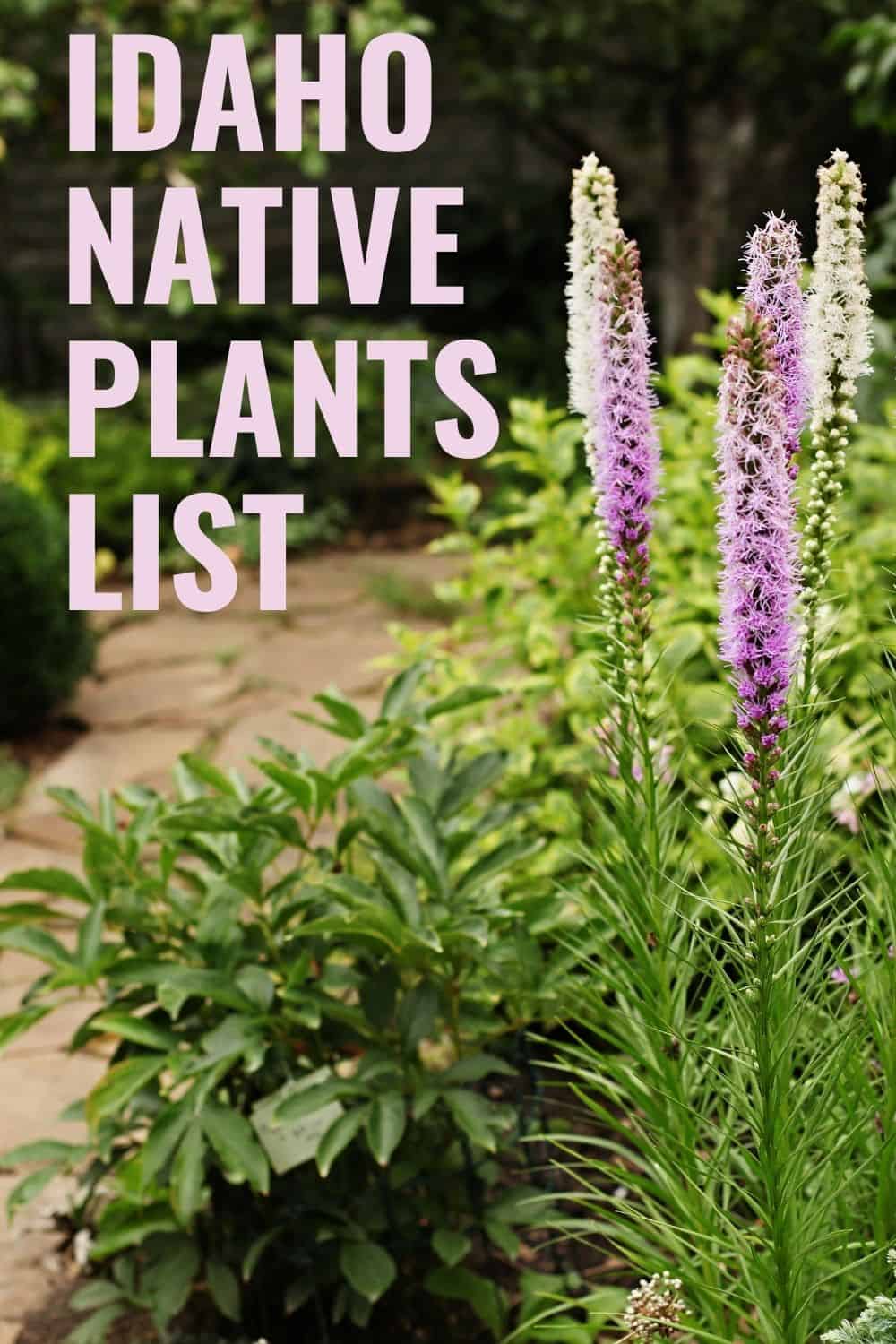

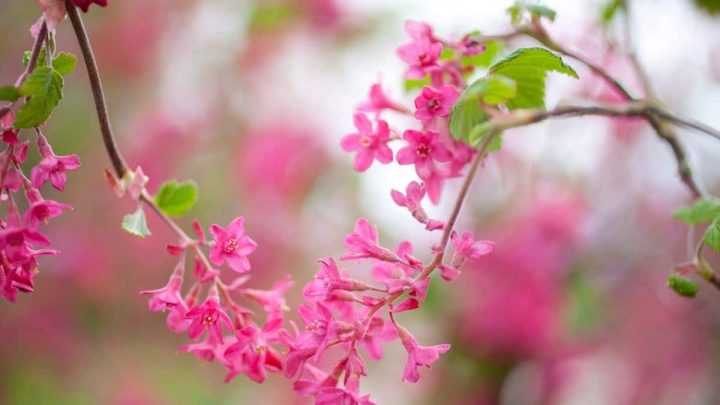

Best Landscaping Ideas For Your Home
Wednesday 17th of August 2022
[…] Idaho Native Plants List: 11 Amazing Plants from the Gem State […]